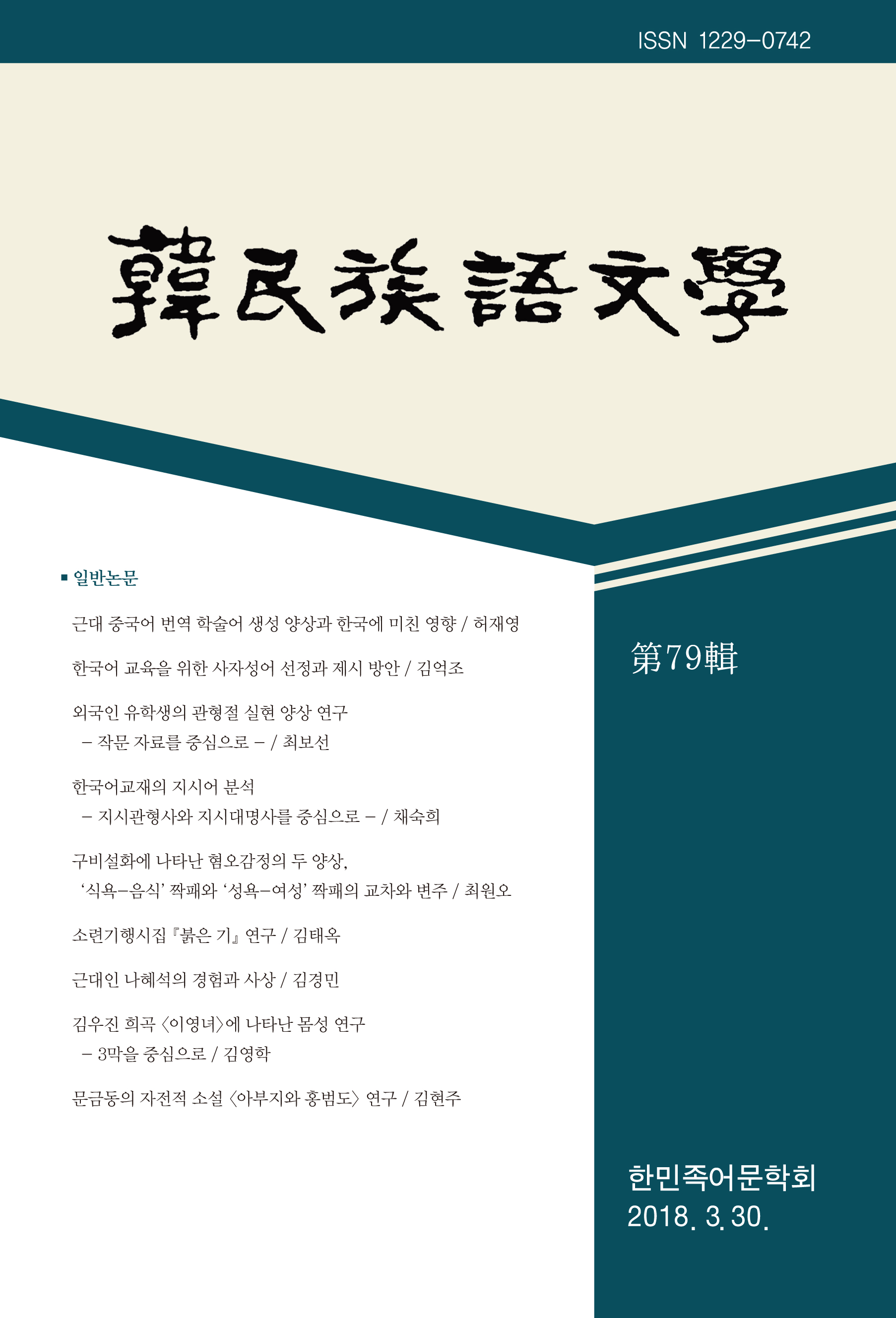본고는 한국어교재의 지시어 제시 양상을 전반적으로 분석함으로써 지시어와 관련된 실제적인 교재 개선 방향을 모색하는 것을 목적으로 한다. 이를 위해 본고에서는 교재에서 명시적으로 목표항목으로 설정된 지시어들에 대한 검토 외에, 본문, 듣기 지문, 과제 등 한국어교재 내의 다양한 텍스트에 포함된 지시어들을 분석하고 그 결과를 한국어 모어화자 자료와 비교 분석한다. 지시어가 교재의 목표항목으로 설정된 경우, 지시어는 초급에 집중적으로 배치되어 있어 초급 이후에 이들 상호 간의 관계나 용법에 대한 체계적인 접근이 어려워 보인다. 또한 지시대명사 ‘이, 그, 저’의 경우 대부분의 교재에서 목표 항목으로 제시되지 않고 있다. 지시어의 용법과 관련해서는 화맥지시를 위주로 지시어의 용법을 제시하고 있으며, 다른 용법에 대한 고려는 다분히 부족한 것으로 파악된다. 한국어교재 텍스트에 사용된 지시어들의 경우, 유형과 상관없이 모두 모어화자 자료보다 낮은 출현빈도를 보이지만, 출현빈도별 순위는 동일하게 나타난다. 지시어의 용법별로 구어성과 문어성의 측면에서 한국어교재의 텍스트가 지시어를 적절히 제시하고 있는지를 검토하였을 때, 지시어들은 유형별로 상이한 경향을 보인다. 이러한 측면에서 모어화자 자료와 현저한 차이를 보이는 용법은 지시관형사 ‘그’의 상맥지시 용법, 지시대명사 ‘그것’의 상맥지시 용법, 지시대명사 ‘여기’의 텍스트지시 용법, 그리고 지시대명사 ‘거기’의 화맥지시 용법이다.
This paper examines various aspects of the demonstratives used in the Korean language education textbooks, especially focusing on the demonstrative adnominals and the demonstrative pronouns. They are suggested intensively in the Korean textbooks for beginners who are learning the language. The demonstrative pronoun 'i, geu, jeo' are seldom suggested in the Korean textbooks. Explanations and examples on the demonstratives are limited to the usage of the context reference. In the dialogues and texts of the Korean textbooks, the demonstratives show a lower frequency than those in the Korean native speaker’s corpus. However, they are the same as those of the Korean native speaker’s corpus in their frequency order. They also show similar aspects in the frequency concerning textual category of the spoken text and written text. The usages of demonstratives which denote critical differences in the aspect of the text category, are conceptual reference of the adnominal 'geu,' conceptual reference of pronoun 'geugeos,' the text reference of pronoun 'yeogi,' and the situational reference of pronoun 'geogi.'




